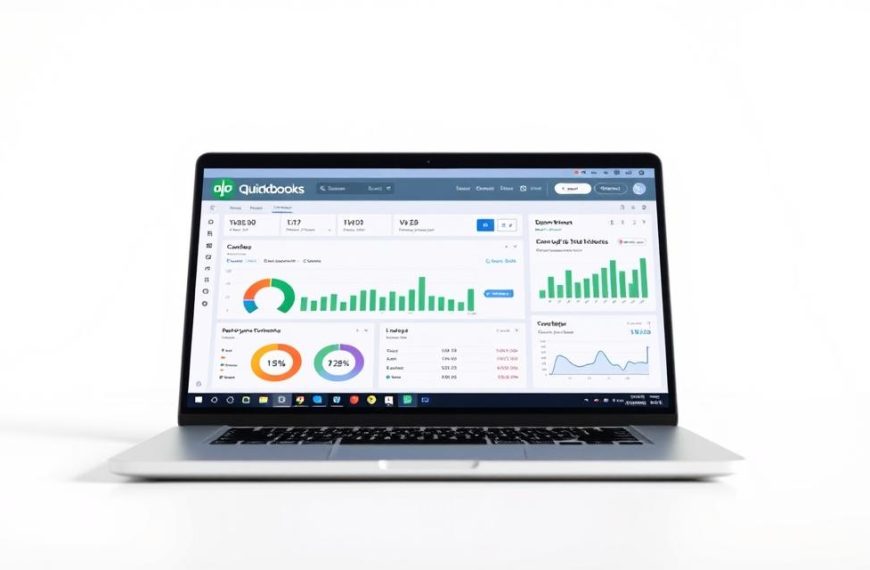Apple, one of the world’s largest companies, has a rich history dating back to 1976 when it was founded by Steve Jobs and Steve Wozniak. With a current market capitalisation of $2.89 trillion, Apple is a significant player in the global stock market.
For both novice and experienced investors, adding Apple shares to their investment portfolio can be a savvy decision. This guide will walk you through the process of investing in Apple, examining the company’s growth trajectory and various market approaches.
Understanding Apple’s business model and financial health is crucial before committing your money to this investment. Our comprehensive guide covers these critical aspects, providing you with the necessary insights to make informed decisions.
Understanding Apple as an Investment Opportunity
The financial health and market position of Apple make it a compelling investment choice. To understand why Apple is considered a valuable investment, it’s essential to examine its market position, growth potential, and key financial indicators.
Apple’s Market Position and Growth Potential
Apple has solidified its position as a leader in the technology industry, with a brand valued at hundreds of billions of dollars. The company’s ability to innovate and expand its product ecosystem contributes to its growth potential. Apple’s strong market presence is supported by its loyal customer base and the continuous demand for its products and services.
Key Financial Indicators and Performance
Apple’s financial performance is a critical factor in its appeal to investors. The company reported $296 billion in revenue and $79 billion in net income during the first nine months of its 2024 fiscal year, demonstrating remarkable stability and growth. Notably, despite a modest revenue increase of about $3 billion compared to the prior-year period, Apple’s earnings per share grew by more than 9%, indicating efficient capital management. Key financial ratios such as profit margins and return on equity consistently outperform industry averages, making Apple stock attractive to value-oriented investors.
The company’s historical stock price performance shows long-term appreciation, with shares gaining approximately 900% over the past decade, significantly outperforming major market indices. This growth, coupled with a robust balance sheet and substantial cash reserves, positions Apple favorably for continued investment and returns.
Why Consider Investing in Apple?
With its strong brand and consistent financial returns, Apple presents a compelling case for investment. The company’s robust market position and innovative product ecosystem make it an attractive option for investors.
Brand Strength and Product Ecosystem
Apple’s brand strength is unparalleled, with a loyal customer base that drives consistent sales. The company’s product ecosystem, including iPhones, Macs, and wearables, ensures a steady stream of revenue.
Innovation and Future Growth Areas
Apple continues to innovate, with significant investments in research and development. Emerging technologies like artificial intelligence and augmented reality are expected to drive future growth, making Apple’s stock an attractive option for long-term investors.
Financial Stability and Shareholder Returns
Apple’s financial stability is a key factor in its appeal to investors. The company pays out dividends with an approximate yearly yield of 0.5% to its shareholders. Additionally, Apple has repurchased shares worth about $600 billion in the past 10 years, demonstrating its commitment to returning value to shareholders.
| Financial Indicator | Value |
|---|---|
| Dividend Yield | 0.5% |
| Share Buyback (10-year total) | $600 billion |
| Share Buyback (Q1 2023) | $19.1 billion |
Evaluating Apple’s Business Model
To invest in Apple, one must first comprehend the company’s business model and its various revenue streams. Apple’s business model is diverse, with revenue generated from both product sales and service offerings.
Product Revenue Streams
Apple’s product revenue streams are primarily driven by the sales of its hardware products, including iPhones, Macs, iPads, and Apple Watches. Although product revenue has seen a decline, it remains a significant contributor to Apple’s overall revenue.
Services and Subscription Growth
Services have emerged as a critical growth driver for Apple, with revenue increasing 13% year-over-year compared to a 3% decline in product revenue during the first nine months of fiscal 2024. The services ecosystem includes the App Store, Apple Music, Apple TV+, Apple Arcade, Apple News+, Apple Fitness+, iCloud, and Apple Pay, creating multiple subscription-based revenue streams.
| Revenue Stream | Growth Rate | Profit Margin |
|---|---|---|
| Product Sales | -3% | Lower Margin |
| Services | 13% | Higher Margin |
The recurring nature of subscription revenue provides greater predictability and stability to Apple’s financial performance, reducing reliance on cyclical hardware upgrade cycles. Apple’s strategy of bundling services through Apple One subscriptions aims to increase customer retention and lifetime value.
Analysing Apple’s Financial Health
Understanding Apple’s financial position is critical for investors seeking to make informed decisions about the company’s stock. A thorough analysis of the company’s financial health provides insights into its stability and growth potential.
Revenue and Profit Trends
Apple’s revenue and profit trends are key indicators of its financial performance. The company has consistently demonstrated strong revenue growth, driven by its diverse product ecosystem and expanding services segment. In the first nine months of fiscal 2024, Apple’s financial results showcased its ability to maintain profitability amidst a competitive market landscape.
| Financial Metric | 2023 | 2024 |
|---|---|---|
| Revenue ($ billion) | 365 | 394 |
| Net Income ($ billion) | 94.6 | 102.8 |
Cash Flow and Debt Management
Apple excels at converting revenue into cash flow, generating $91.4 billion in operating cash flow during the first nine months of fiscal 2024. This cash generation capability enables the company to invest in growth initiatives, return value to shareholders through dividends and share repurchases, and maintain a robust financial profile. Apple’s disciplined approach to debt management and asset allocation contributes to its financial stability.
- Efficient working capital management
- Conservative debt-to-equity ratio
- Strategic flexibility for acquisitions and R&D investments
By maintaining a strong financial position, Apple demonstrates its ability to balance investment in the business with returns to shareholders, underpinned by effective management of its financial resources.
How to Invest Money in Apple Company: Direct Stock Purchase
Investing in Apple directly through stock purchase is a straightforward process that requires a brokerage account. To start, you’ll need to select a reputable brokerage firm that meets your investment needs.
Setting Up a Brokerage Account
To buy Apple shares, setting up a brokerage account is the first step. When choosing a brokerage, consider factors such as fees, account minimums, and the ease of use of their trading platform.
Some popular brokerages for buying Apple stock include those that offer competitive pricing, user-friendly interfaces, and robust customer support.
Placing Your First Apple Stock Order
Once your brokerage account is funded, you can place your first order to purchase Apple shares. You’ll need to enter the ticker symbol (AAPL) and decide between a market order and a limit order.
- For a market order, you’ll buy Apple shares at the current market price.
- For a limit order, you’ll set a maximum price you’re willing to pay, which may not execute if the stock price doesn’t reach your specified limit.
- Determine the number of shares you wish to purchase or the amount you want to invest if your broker offers fractional share investing.
After reviewing your order details, including any applicable fees, submit your order, which will typically execute within seconds during market hours.
Alternative Ways to Invest in Apple
For those looking to diversify their investment in Apple, there are alternative options available. Beyond direct stock purchase, investors can explore various financial products that include Apple shares.
ETFs and Index Funds Containing Apple Shares
One way to invest in Apple is through Exchange-Traded Funds (ETFs) and index funds that hold Apple shares. These funds track a particular index, such as the S&P 500, and provide broad market exposure, including Apple’s stock performance. Investors can benefit from diversification by investing in ETFs that include Apple, reducing reliance on individual stock performance.
Dividend Reinvestment Plans
Apple has consistently paid and increased its dividend annually since reinstating it in 2012. Dividend Reinvestment Plans (DRIPs) offer an efficient way to compound Apple investments by automatically using dividend payments to purchase additional shares. This strategy can significantly enhance total returns over time, particularly for long-term investors.
- DRIPs allow for the automatic reinvestment of dividends into more Apple shares.
- Many brokerages offer commission-free dividend reinvestment programmes.
- Historical analysis shows that dividend reinvestment can enhance total returns.
By leveraging DRIPs, investors can accelerate the growth of their Apple holdings through the power of compounding, making it an attractive strategy for those looking to maximise their investment in Apple stock over time.
Understanding Apple Stock Pricing and Valuation
To invest wisely in Apple, one must comprehend the factors influencing its stock price and overall valuation. Apple’s stock has garnered significant attention due to its historical performance and current market standing.
Historical Price Performance
Apple’s stock price has experienced substantial growth over the years, with notable increases since 2021. The stock’s value has been influenced by various factors, including product launches, financial reports, and market trends.
Analyzing the historical price performance helps investors understand the stock’s volatility and potential for future growth.
P/E Ratio and Other Valuation Metrics
Apple’s price-to-earnings (P/E) ratio currently stands at 30.4, significantly higher than its historical average of approximately 15 between 2009 and 2018. This elevated valuation suggests that investors are pricing in substantial future growth expectations.
| Valuation Metric | Current Value | Historical Average |
|---|---|---|
| P/E Ratio | 30.4 | 15 |
| P/S Ratio | 7.2 | 4.5 |
| P/FCF Ratio | 25.1 | 18.3 |
Investors should consider additional valuation metrics, such as price-to-sales (P/S) and price-to-free cash flow (P/FCF), for a comprehensive assessment of Apple’s stock value.
Creating an Apple Investment Strategy
To maximise returns from investing in Apple, a well-thought-out investment strategy is crucial. This involves understanding your financial goals and risk tolerance.
Long-term vs Short-term Investment Approaches
When investing in Apple, you must decide between a long-term or short-term strategy. A long-term approach involves holding onto Apple stock for an extended period, potentially benefiting from the company’s overall growth and stability. In contrast, a short-term strategy focuses on capitalising on immediate market fluctuations. For instance, if you purchased Apple shares expecting a 15% yearly return and received a 30% profit in one week, you might consider selling, even if the stock price continues to rise.
Dollar-Cost Averaging with Apple Stock
Dollar-cost averaging is a systematic investment approach that involves investing a fixed amount in Apple stock at regular intervals, regardless of the share price. This strategy helps mitigate the risk of poor market timing and reduces the impact of price volatility on your overall investment. By buying more shares when the price is lower and fewer when it’s higher, you can potentially lower your average cost per share over time.
| Investment Strategy | Description | Benefits |
|---|---|---|
| Long-term | Holding Apple stock for an extended period | Potential for long-term growth and stability |
| Dollar-Cost Averaging | Investing a fixed amount at regular intervals | Reduces impact of price volatility |
Managing Risk When Investing in Apple
The appeal of investing in Apple is undeniable, but a well-thought-out risk management strategy is essential. Investors should be aware of the potential risks and take steps to mitigate them.
Portfolio Diversification Strategies
Diversifying your investment portfolio is a key strategy for managing risk. By spreading your investments across different asset classes, you can reduce your exposure to any one particular stock, including Apple. For instance, investing in a mix of technology, healthcare, and finance stocks can help balance your portfolio. According to experts, a diversified portfolio can help minimise potential losses and maximise returns over the long term. For more insights on diversification, you can refer to Investopedia’s analysis on investing in Apple.
Setting Stop-Loss Orders
Stop-loss orders are a valuable tool for managing risk when trading Apple stocks. By setting a stop-loss order, you can limit the amount you are willing to lose if the stock price falls. For example, setting a stop-loss order at 10% below your purchase price can help protect your investment. It’s also worth noting that most trading platforms allow you to set stop-loss orders when you make your initial purchase or add them to existing positions. As one investor noted, “Stop-loss orders can help you limit your losses and avoid significant financial damage.”
Monitoring Your Apple Investment
Monitoring your Apple investment is crucial for maximising returns and minimising losses. As an investor, it’s essential to stay informed about the performance of your Apple stock and make timely decisions.
Key Performance Indicators to Track
To effectively monitor your Apple investment, focus on key performance indicators such as revenue growth, profit margins, and competitive positioning. You can track these metrics through Apple’s quarterly earnings reports and industry analyses. A comprehensive overview of these indicators can be seen in the table below:
| Indicator | Description | Importance |
|---|---|---|
| Revenue Growth | Increase in Apple’s revenue over time | High |
| Profit Margins | Apple’s ability to maintain profitability | High |
| Competitive Positioning | Apple’s standing relative to its competitors | Medium |
When to Consider Selling Apple Shares
Determining when to sell your Apple shares requires careful consideration of both company-specific developments and your personal investment objectives. Consider selling if Apple’s fundamental business outlook deteriorates or if the stock price becomes unjustifiably high. Other factors include changes in management, company strategy, or competitive landscape. 
Tax Considerations for Apple Investors
When investing in Apple, it’s essential to be aware of the tax implications to maximize your return on investment. Understanding these considerations can help you make informed decisions about your Apple shares.
Dividend Taxation
Apple distributes a portion of its profits to shareholders in the form of dividends. The tax treatment of these dividends varies depending on your tax residency and the tax laws in your jurisdiction. For instance, in the United States, qualified dividends are taxed at a lower rate than ordinary income. It’s crucial to understand how dividend taxation applies to your specific situation to optimize your after-tax returns.
Capital Gains Implications
When you sell your Apple stock at a profit, you may be subject to capital gains tax. The rate depends on your income level, how long you’ve held the shares, and your country’s tax regulations. For example, in the UK, capital gains are taxed at 10% or 20% after applying your annual tax-free allowance. Utilizing tax-efficient accounts, such as ISAs, can help shield your investments from capital gains tax.
| Tax Consideration | Description | Tax Implication |
|---|---|---|
| Dividend Taxation | Tax on dividends received from Apple | Varies by jurisdiction and tax status |
| Capital Gains Tax | Tax on profit from selling Apple shares | Depends on income level and holding period |
Conclusion: Building Wealth Through Apple Investment
As one of the world’s most valuable companies, Apple offers investors a chance to be part of a global technology leader. With a market capitalization of about $2.89 trillion, Apple’s stocks consistently appreciate, making it a profitable investment opportunity.
Investing in Apple stock represents an opportunity to own shares in a company with a proven track record of delivering strong returns to investors. Whether through direct stock purchases, ETFs, or dividend reinvestment plans, Apple offers multiple avenues for investors to participate in its continued growth and success.
A thoughtful investment approach that considers your financial goals, risk tolerance, and time horizon is essential when adding Apple shares to your portfolio. Regular monitoring of both company performance and broader market conditions, combined with a disciplined investment strategy, can help maximise your potential returns while managing risk.
While past performance doesn’t guarantee future results, Apple’s strong brand, loyal customer base, financial strength, and commitment to innovation position it well for continued success in the evolving technology landscape.














